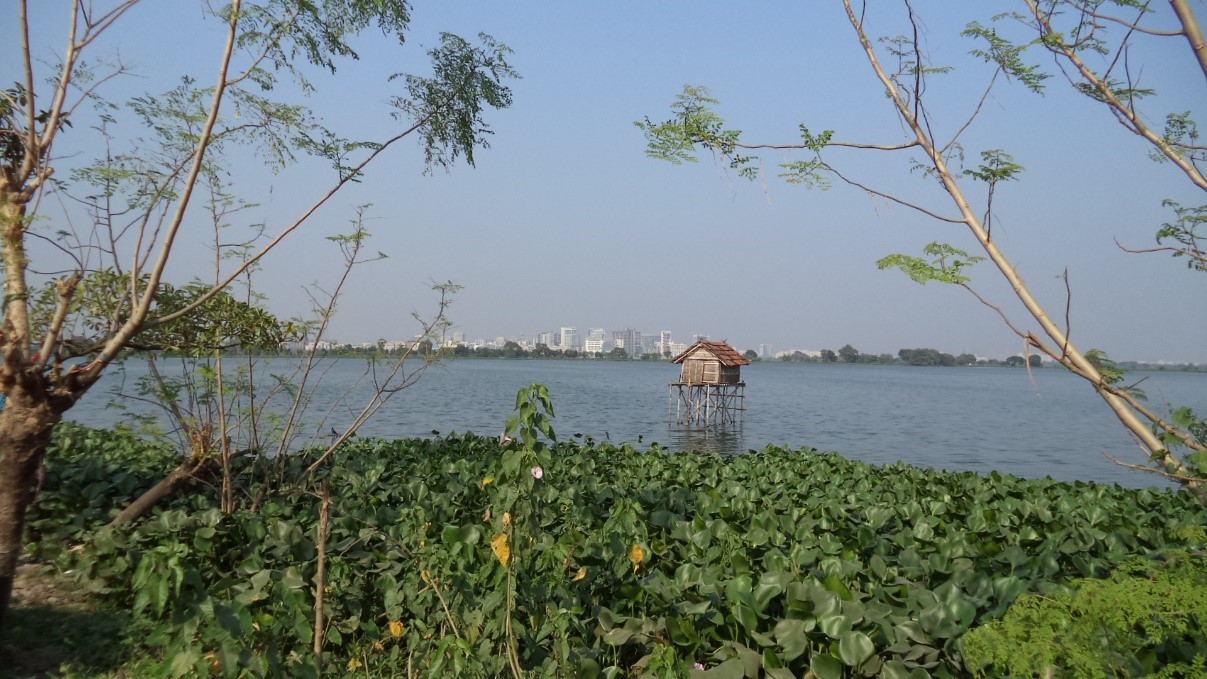Water Wise: Integrating Urban and Rural Water Management
In April 2024, floodwater inundated thousands of homes and displaced over 200,000 people from Russian and Kazakhstani cities along the Ural River. That same month, in Tanzania, Kenya, and Somalia, floods and landslides killed over 150 people and injured hundreds of others as entire harvests were lost. Severe rainstorms swamped Persian Gulf countries, killing people in Oman and the UAE, and causing over $650 million in infrastructure damage. And still in April, in Brazil's Rio Grande do Sul state, nearly 50 people died and 5,000 homes were destroyed from heavy rains and flooding in the worst climate disaster to date for the region.
These current events underscore the urgent need for a holistic approach to resilience-building efforts, particularly in low- and middle-income countries. When talked about in the context of urban and rural development, resilience refers to the capacity to withstand, adapt to, and recover from external shocks and stresses – from natural disasters to human-caused events – while maintaining essential functions.

[Image: Eastern Kolkata Wetlands, India. Photo credit: MetaMeta from GOPA Group]
The nexus of urban resilience and rural prosperity
As our planet grapples with the growing threat of floods – and on the opposite extreme, droughts – considering the interplay between urban and rural landscapes becomes increasingly important.
“A single road can disturb the entirety of a water management system,” says Frank van Steenbergen, owner and director of MetaMeta, a Dutch social enterprise that recently joined GOPA Consulting Group. He stresses the need for integrated approaches to urban resilience projects.
He notes, for example, that cities’ stormwater drainage or wastewater disposal mechanisms can wreak havoc on the land and water resources in surrounding rural areas, polluting and compromising food production for entire regions. Yet, when done correctly, stormwater from cities can be retained and wastewater reused. As a result, the livelihoods of the people who work the land are strengthened, local food systems are improved, and entire metropolitan areas are more resilient to flood and drought.
Opportunities within fixed constraints
“The primary issue with making cities resilient to floods is the lack of available land for proper drainage,” says Winfried Zarges, Regional Director of the Middle East at GOPA Infra. In most major cities of low- and middle-income countries, the limited space available for living leads to people being pushed to settle in makeshift and informal communities at the edge of urban centers. These populations often need to be relocated when proper water draining infrastructure like channels are built. “This is an even more complex issue in coastal cities, when you take into consideration the risk of rising sea levels,” says Zarges.
Managing water in cities is a complex issue from a governance standpoint as well. “Tackling the ‘bigger picture’ of urban resilience requires a coordinated effort from all high-level stakeholders, from private sector developers to government ministries and environmental groups, which is often a challenge because of competing priorities,” notes Zarges. This is particularly true in contexts where immediate issues such as building schools and hospitals or tackling acute famine or chronic malnutrition can feel more pressing than long-term natural disaster resilience projects.
Adding to the challenge is the lack of regulation around water usage in rural areas, where large-scale farming often leads to the rapid depletion of ground water. “We need to consider aquifer recharge strategies and look at the whole picture, as opposed to thinking of rural watersheds as being separate from urban contexts,” says van Steenbergen.
These constraints, however, also offer unique opportunities. One approach is to rethink infrastructure so that it no longer serves a single function, but rather tackles multiple issues at once. Urban roads, for example, can be constructed to serve as flood water drains or to slow down peak run-off; urban regreening projects can absorb flood run-off and recharge groundwater tables while also serving as public parks; and urban wetlands can serve as recreation and wildlife protection areas while collecting flood water from the cities and improving water quality. Existing governance structures and regulations can – and should – act as mechanisms to facilitate discussions and agreements, focusing on bridging the gap between urban and rural water usage, drainage, and disposal.
Rising to the challenge
In recent years, donors have noted the urgency of adapting to our changing climate, leading to a growing emphasis on urban resilience in development programs. By implementing these types of measures ahead of time, not only can the loss of human lives be prevented, but costs can be saved compared to dealing with the aftermath of infrastructure damage.
Zarges notes, however, that “implementing these types of projects requires an immense shift in perspective from a reactive approach to a proactive one that requires preparing entire regions for something that we hope will never happen.” Rather than implementing solutions to challenges that communities are already facing, projects focused on building cities’ resilience consider possible future scenarios and preemptively design solutions.
“Cities are proud to call themselves ‘green’ and resilient. This creates an opportunity,” says van Steenbergen. Today, 55% of the world's population lives in urban areas, a proportion that is expected to increase to 68% by 2050. Within our rapidly changing climate, being strategic with how cities are designed and built from a flood-resistance perspective is more crucial than ever. In doing so, planners, designers, policymakers and others need to have front-of-mind the relationships between cities and the surrounding rural environments.
